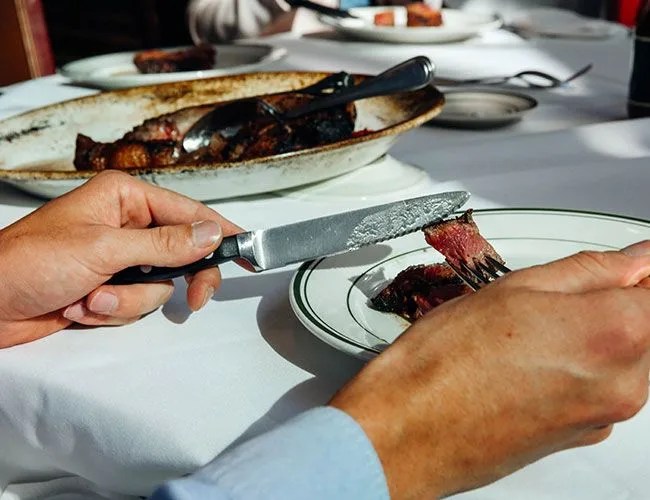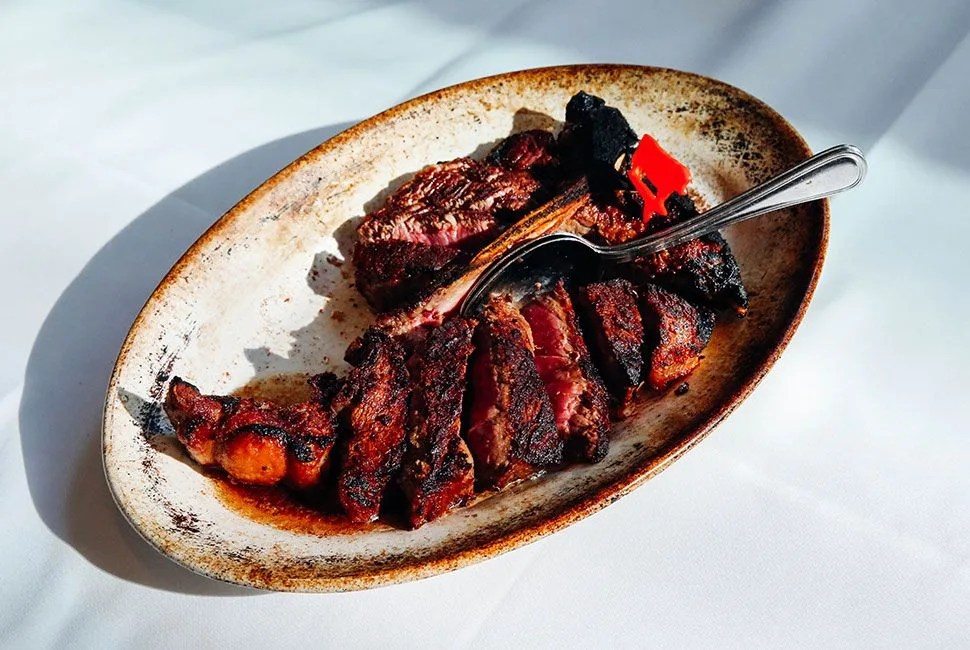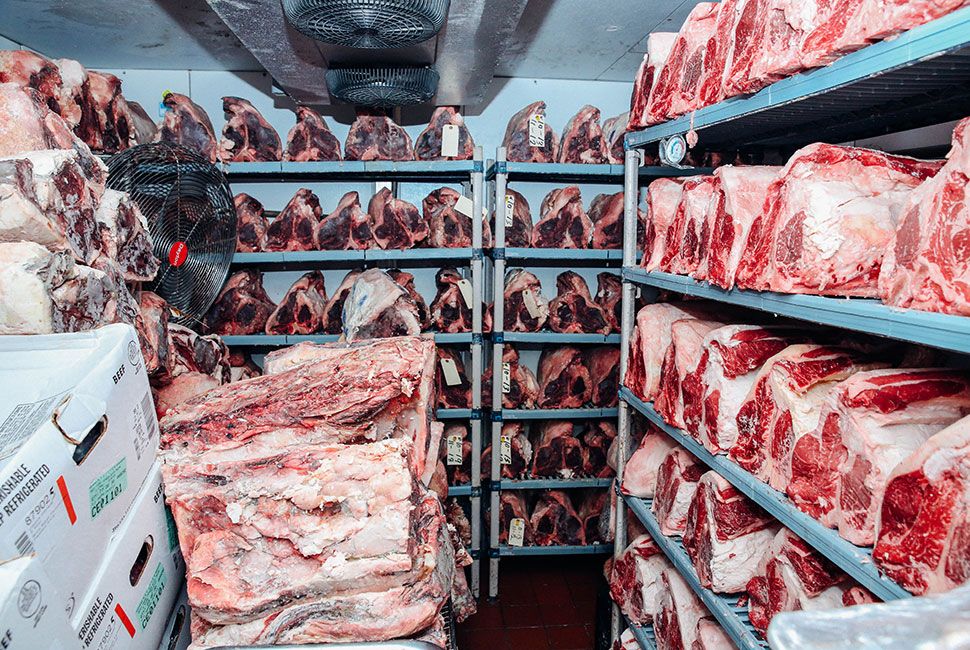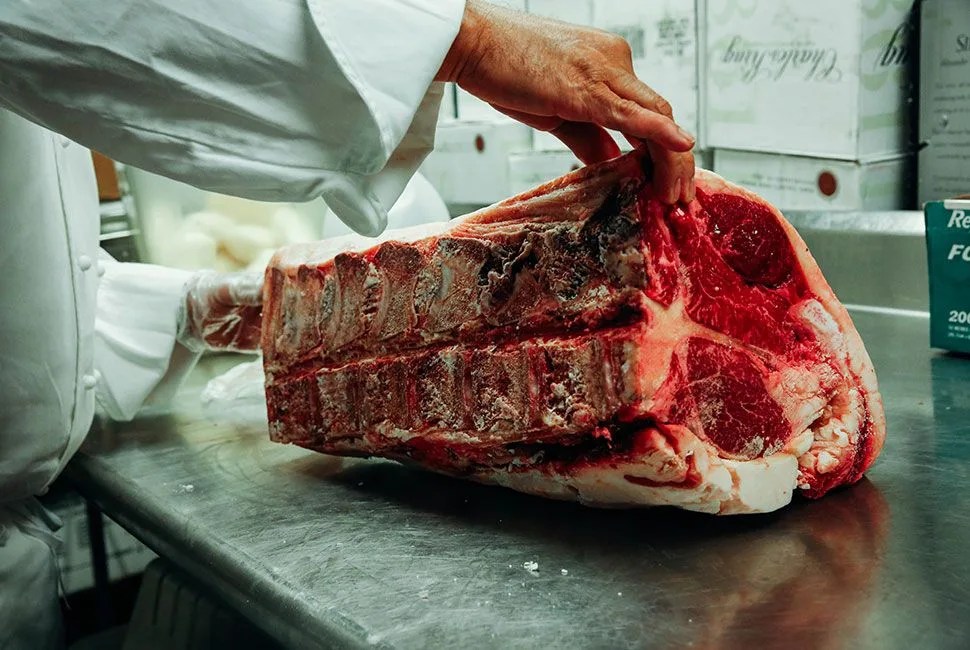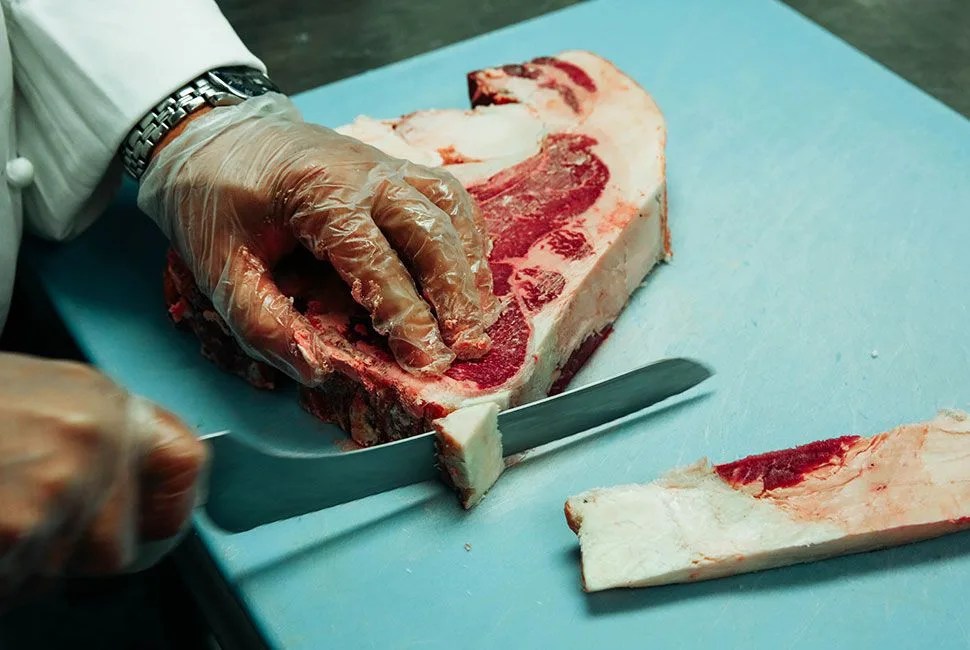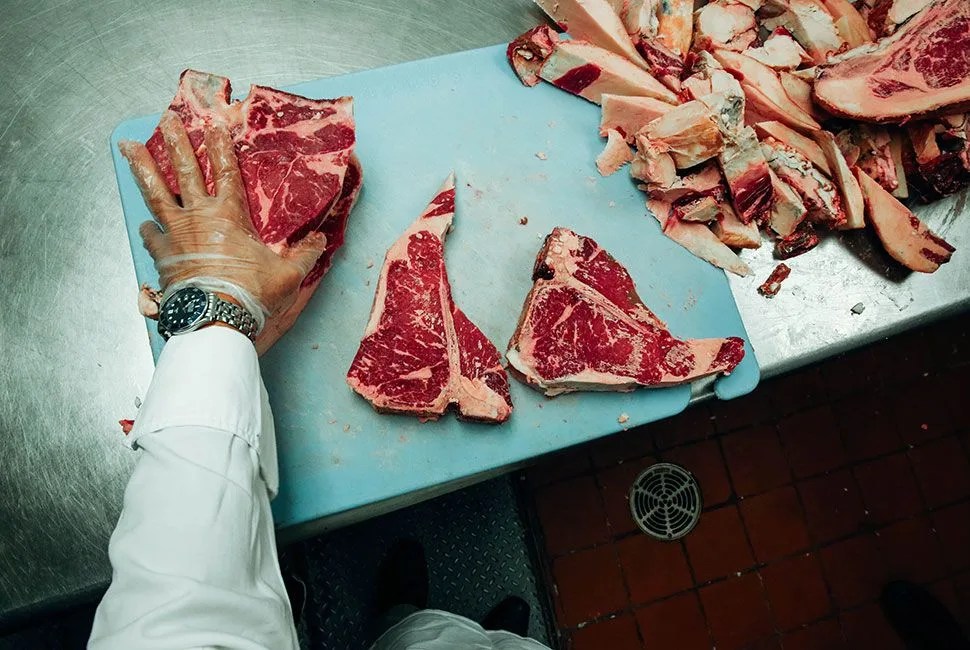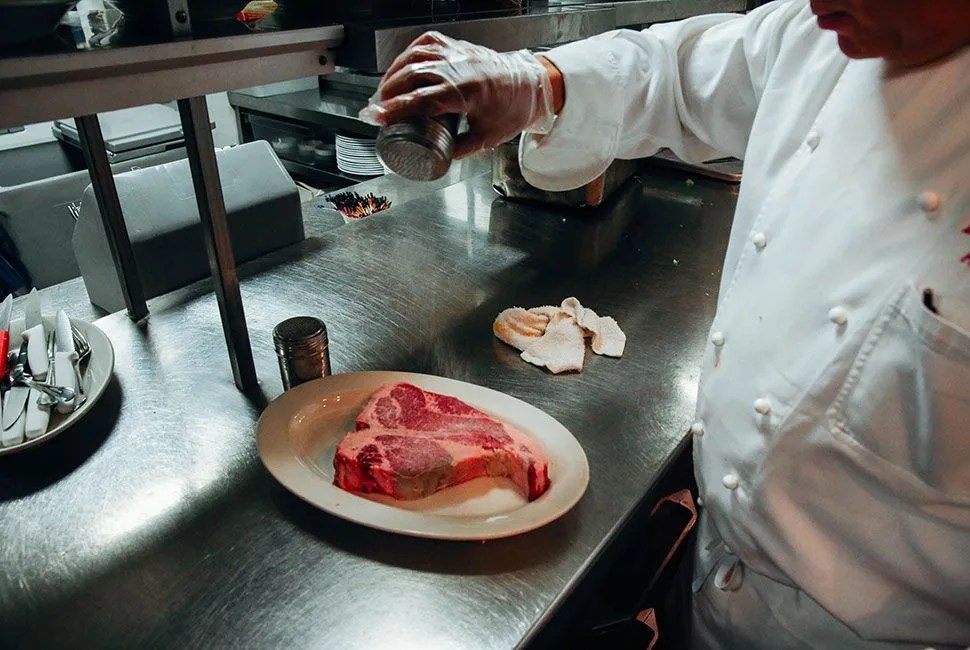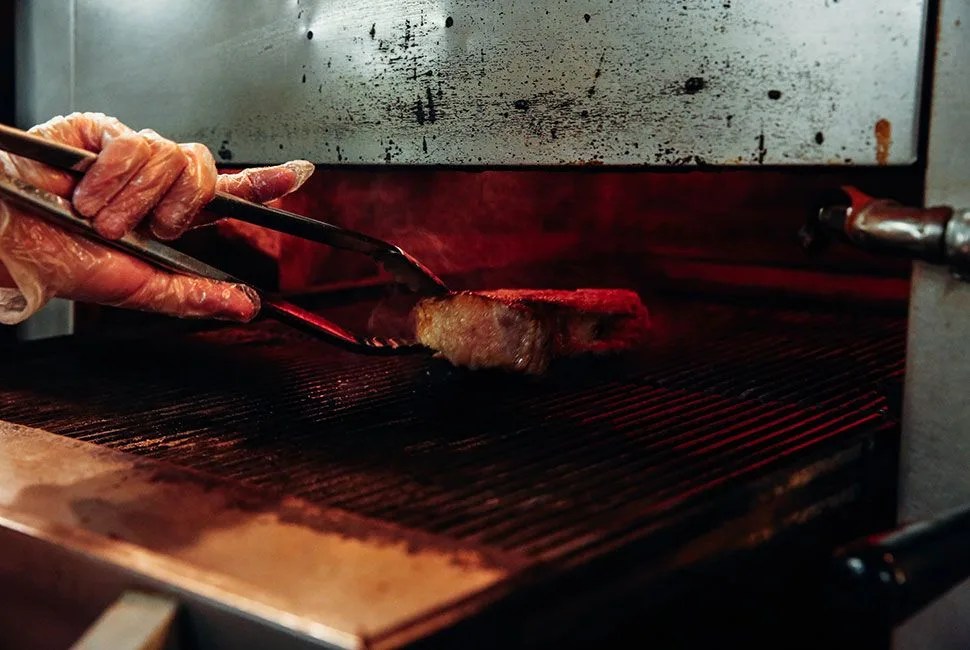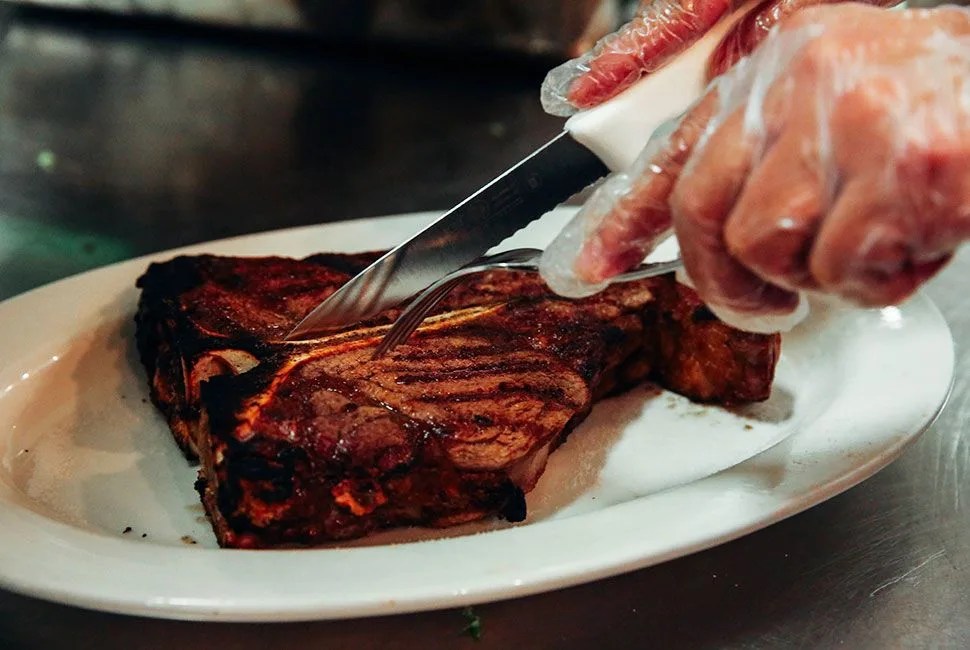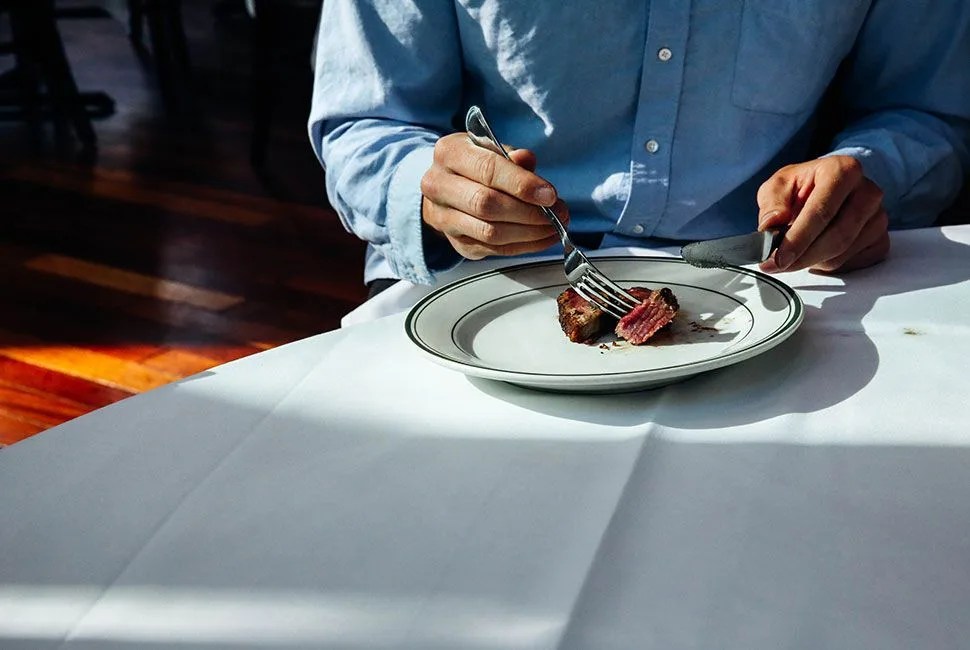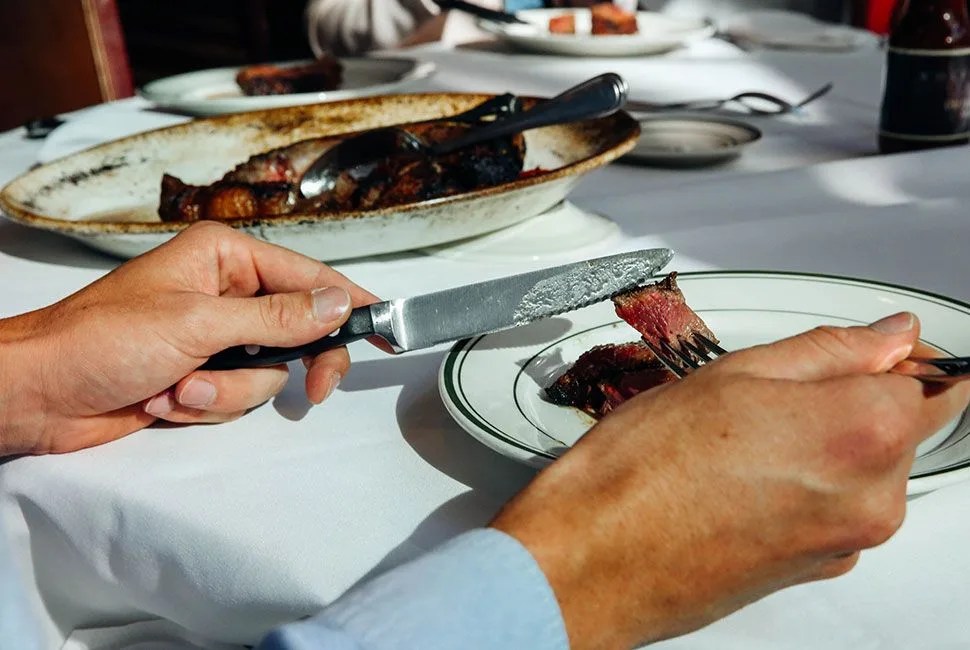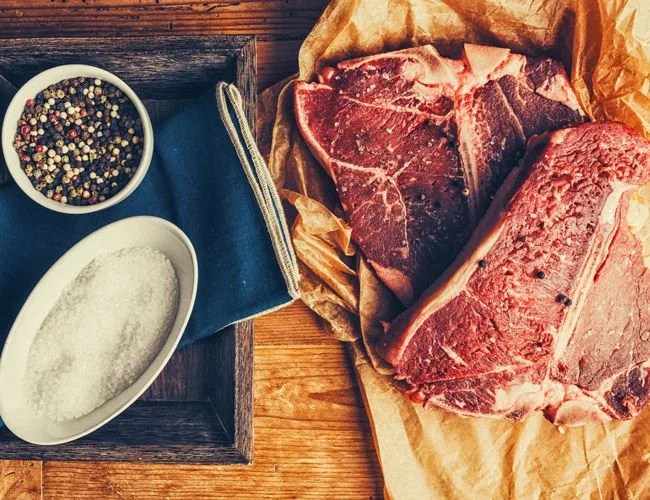11 photos
Amiro Cruz — a stout Hispanic man, slightly balding, in glasses, black leather shoes, tan Levi’s and an Omega watch on his wrist — stands before an entire locker of beef. He holds in his hand a few pounds of cow — a porterhouse steak. It’s been dry aged in-house for 28 days. Cruz is going to take this steak, walk it upstairs, put it into an oven that fires at over 1,200 degrees, and cook it for a few short minutes. Then he’s going to slice it, put it on a plate and sell it to a drooling contingency of meat eaters for $100. “When it’s done properly and aged properly,” he tells me, “you can’t go wrong.”
Cruz is the executive chef at Wolfgang’s Steakhouse, a global institution of steak started by Wolfgang Zwiener, a man who worked at NYC’s venerable steakhouse, Peter Luger, for 40 years before branching out to start his own operation. When Wolfgang started his first restaurant, Cruz was there, and Cruz has worked for the company for all 11 years (collectively, he has over 30 years of restaurant experience). He knows his beef.
“The porterhouse is the Rolls-Royce of the cuts,” Cruz says, and, later, after he pulls the steak from the oven and places the charred and bubbling piece of meat before me, it’s no question that it is the king of beef. “The customer gets to enjoy two different cuts at the same time. They get to enjoy part of the filet mignon, and the strip loin. And they get both flavors at the same time. You cannot find that anywhere else.”
So how is the prized beef best cooked? Cruz walked me through his process at Wolfgang’s, and also offered advice for making it at home.
1 Select the beef. Wolfgang’s uses USDA Prime Black Angus beef from Master Purveyors, in the Bronx. The Prime ranking is the highest given by the USDA, which constitutes premium beef with a corresponding level of marbling. Cruz emphasizes, “Don’t waste your time taking a lower-end piece of beef to dry age it, because it’s not worth it. You only do this for the high-end cuts.” When I cooked a porterhouse at home, using Cruz’s methods, I used a 34-ounce Prime dry-aged Aspen Ridge Porterhouse, from Rare Gourmet Meats.
2 Age properly. The beef comes to the restaurant fresh, and then Cruz ages his beef in-house. “If you put it fresh, from day one, on the shelf, and you monitor that for 28 days — you are sure that it’s done correctly and you have the right time.” The aging room is kept around 35 degrees, and the 28 days allows enough time for the beef’s moisture to evaporate and the meat’s enzymes to start breaking down the tissue, creating tenderness and flavor. Dry aging will create a massive difference in texture and flavor from fresh meat, and on premium cuts like the porterhouse, it’s best to aim for at least 21 days of aging. If you have the proper means to dry age at home and can source a properly fat-encased piece of meat, go for it. Otherwise, select a purveyor who dry ages their beef.
